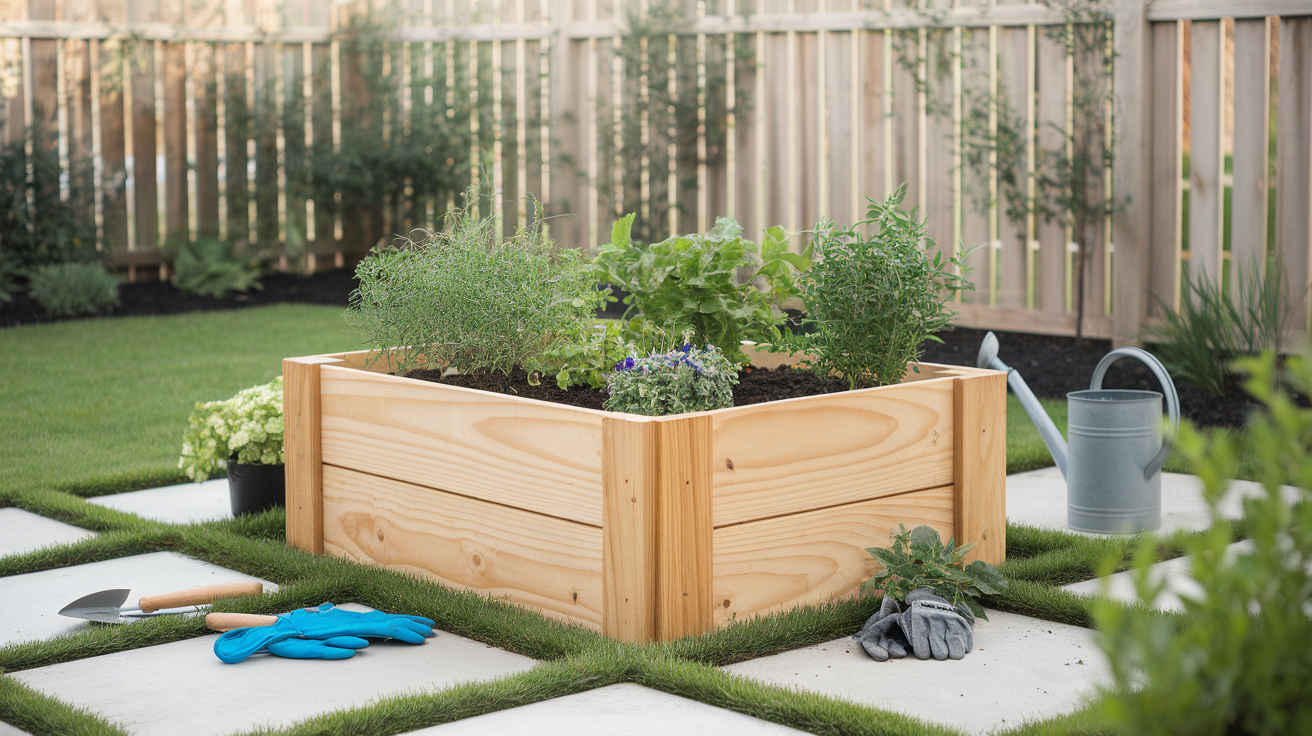Tired of bending over garden rows or struggling with messy soil? I get it. Starting a garden can feel a bit much, especially if your yard isn’t big or the ground isn’t great for planting.
That’s where raised garden beds come in. They make gardening easier, cleaner, and more fun. You don’t need fancy tools or tons of space.
Just a little time, some basic materials, and you’re set.
I’ve put together smart and simple DIY ideas that anyone can try, whether you’re new to gardening or just want a better setup.
You’ll find ideas that save money, fit small yards, and even let you grow more in less space.
I’ve kept everything easy to follow, with tips to help you build your own raised bed and grow fresh fruits, veggies, or flowers right at home.
These ideas are practical, doable, and made for people like you and me.
What Is a Raised Garden Bed?
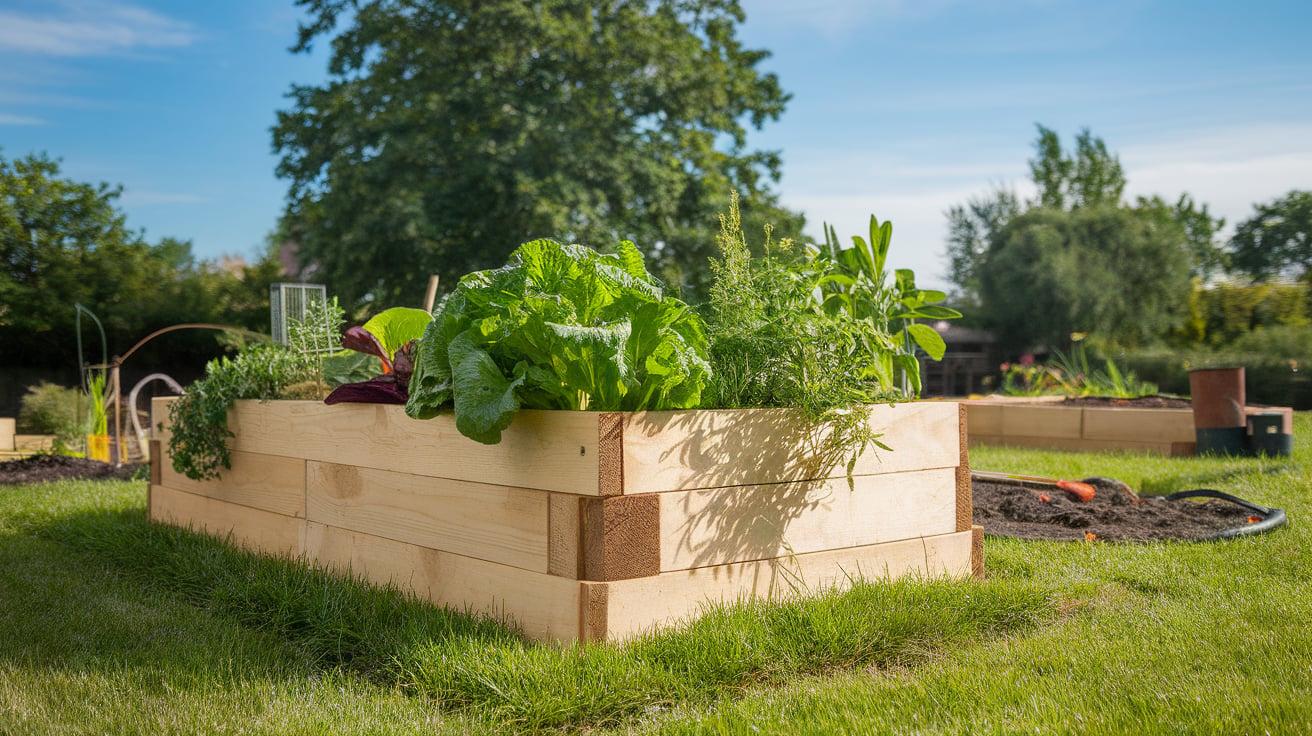
A raised garden bed is a garden that sits above the ground, often in a box or frame.
Instead of planting directly into your yard’s soil, you fill the raised bed with good-quality soil, compost, and other materials that help plants grow better.
These beds can be made from a variety of materials, including wood, bricks, metal, or even recycled items such as old containers.
Raised beds are beneficial because they provide more control over the soil and drainage. That means fewer weeds, better water flow, and healthier plants.
They also make gardening easier on your back and knees since you don’t have to bend down as much.
Some people build them to make the most of small spaces, while others use them to keep their gardens neat.
Whether you want to grow vegetables, herbs, or flowers, a raised bed can help you do it more easily and with less stress.
DIY Raised Garden Bed Ideas for Every Backyard
Looking for a simple way to start growing your own plants? These raised bed ideas are easy to build, low-cost, and work well in almost any backyard.
1. Classic Wooden Frame

This is one of the most common and beginner-friendly options. You just need four wooden boards, a few screws, and a drill.
Choose untreated wood so no harmful chemicals get into your soil. You can build a square or a rectangle, depending on the space you have.
Once the frame is ready, place it on the ground, fill it with good soil, and you’re set to plant. This style works well for vegetables, flowers, or herbs.
It’s simple, neat, and easy to maintain- perfect if you’re new to gardening or want something quick and reliable.
2. Reclaimed Pallet Bed

Recycled wooden pallets are cheap and easy to find, making them great for DIY projects.
You can break the pallets apart or use them as they are to form the sides of your garden bed.
Nail or screw them together into a box shape, then line the inside with landscape fabric to hold the soil.
This idea is perfect if you’re looking for something budget-friendly and don’t mind a slightly rustic look.
Just make sure the pallets are safe to use- look for stamps that show they haven’t been treated with chemicals.
3. Cinder Block Garden Bed
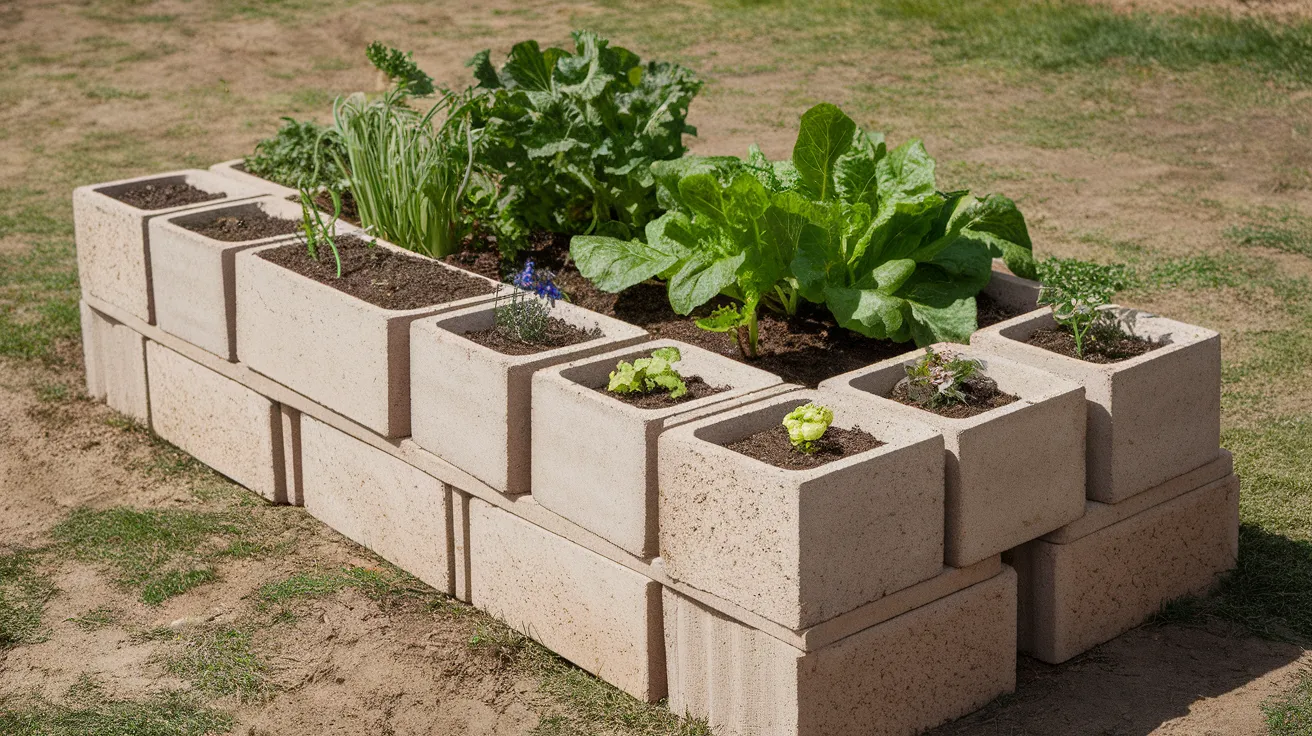
Cinder blocks are strong, simple to use, and need no special tools. Arrange them into a square or rectangle right on the ground.
Fill the middle with good soil, and your bed is ready. The holes in the blocks can also be filled with soil and used to grow small plants like herbs or flowers.
This design is great for anyone who wants a sturdy bed that lasts for years. It also gives your garden a neat look and doesn’t require any cutting or hammering- just some lifting and stacking.
4. Tiered Raised Beds
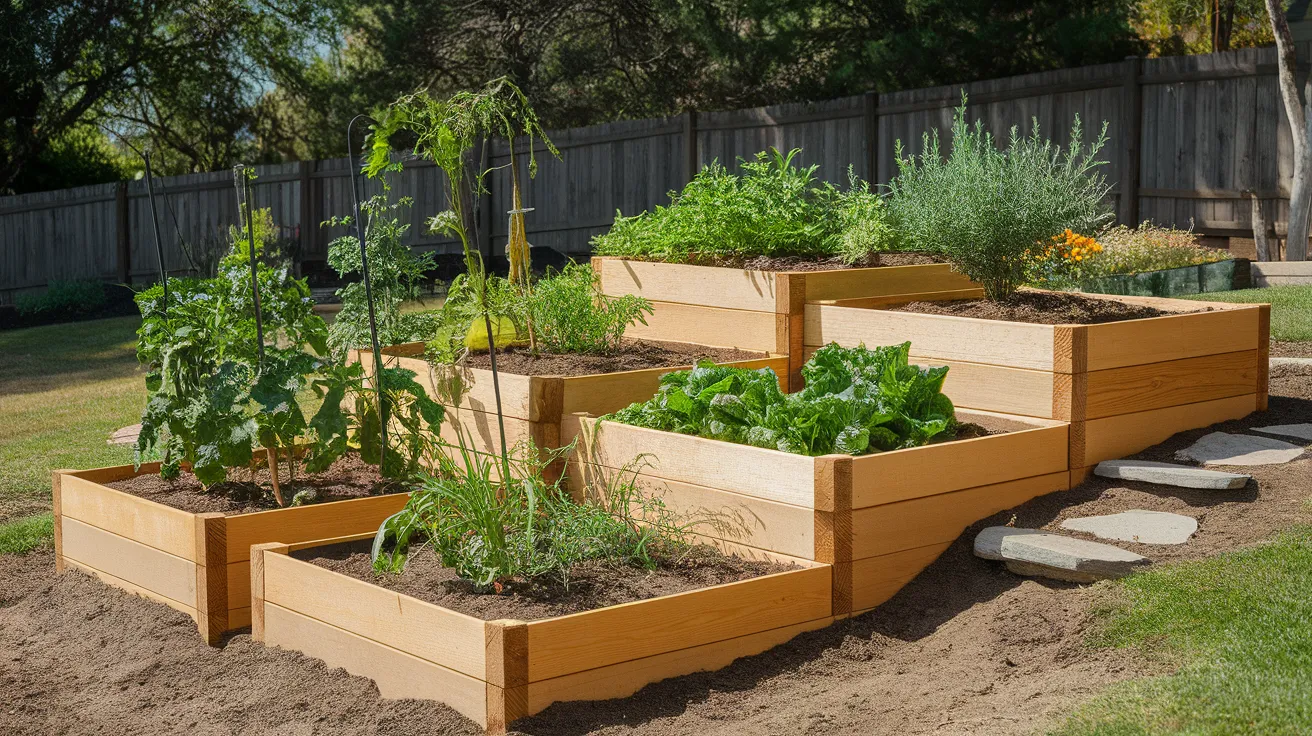
Tiered beds are great if you want to grow many plants in one area.
These beds have different levels, like steps, so each type of plant gets the right amount of sun and space.
For example, you can grow deep-rooted veggies on the bottom and smaller herbs or flowers on top.
They also help with water flow since the top drains into the lower levels. Use wood, bricks, or even plastic boxes to create the levels.
Tiered beds are perfect for gardens with uneven ground or if you want a design that saves space but still grows a lot.
5. Corner Garden Beds
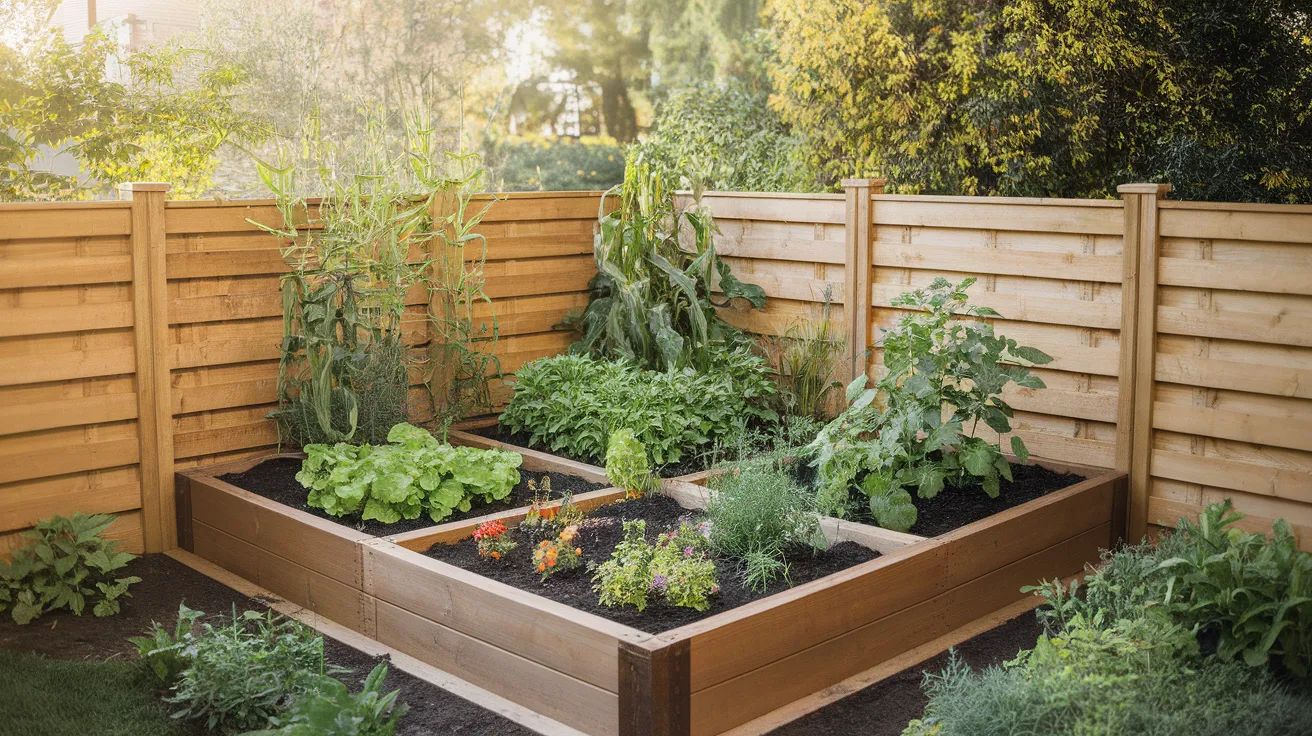
Have an empty corner in your backyard? Turn it into a small garden with a corner-shaped raised bed.
These beds are designed to fit snugly into two meeting walls or fence lines. You can make them L-shaped or rounded, depending on what works best for your space.
They’re great for keeping your yard tidy and growing more in a small area. Use wood or stone to build the sides, then add rich soil.
These are also nice for planting taller crops in the back and smaller ones in front, making them both pretty and useful.
6. Vertical Raised Beds

If your yard is small or you only have a patio or balcony, vertical beds can help. These beds grow up instead of across.
You can use stacked wooden boxes, hanging pouches, or shelves to hold soil and plants. Herbs, lettuce, and strawberries work great in these.
Make sure each level gets enough sunlight and water. Vertical beds also keep plants off the ground, which means fewer bugs and easier care.
They save space and give your garden a tidy look, all while letting you grow more in a smaller area.
7. Wattle Raised Beds

Wattle beds are made by weaving thin branches or twigs around wooden stakes to form the sides of the bed.
It’s a fun and natural-looking style that works well if you have access to tree trimmings or garden waste. First, drive short wooden stakes into the ground in a circle or square.
Then weave the twigs between them to make a fence-like wall. Fill the inside with soil, and you’re ready to plant.
This idea adds a bit of charm to your garden and costs very little if you collect the materials yourself.
8. Galvanized Steel Beds

Galvanized steel garden beds are made from metal, which makes them strong and long-lasting. You can buy ready-made kits or build one using metal sheets and corner brackets.
These beds don’t rot like wood and look clean and modern. They also warm up quickly in spring, helping your plants grow faster.
Make sure to line the bottom if you’re placing them on grass, and check for sharp edges when building.
They’re great for people who want a low-maintenance bed that will last many seasons with little upkeep.
9. Container Garden Conversion

If you have old buckets, barrels, or even a bathtub, you can turn them into garden beds.
Just clean them out and drill a few holes in the bottom for drainage. Then fill them with soil and start planting.
This idea is perfect for renters or people who want a movable garden. It also helps keep costs low by reusing what you already have.
Containers work well for herbs, small veggies, or flowers. Try grouping a few different ones together for a fun and useful garden setup.
10. U-Shaped Layout
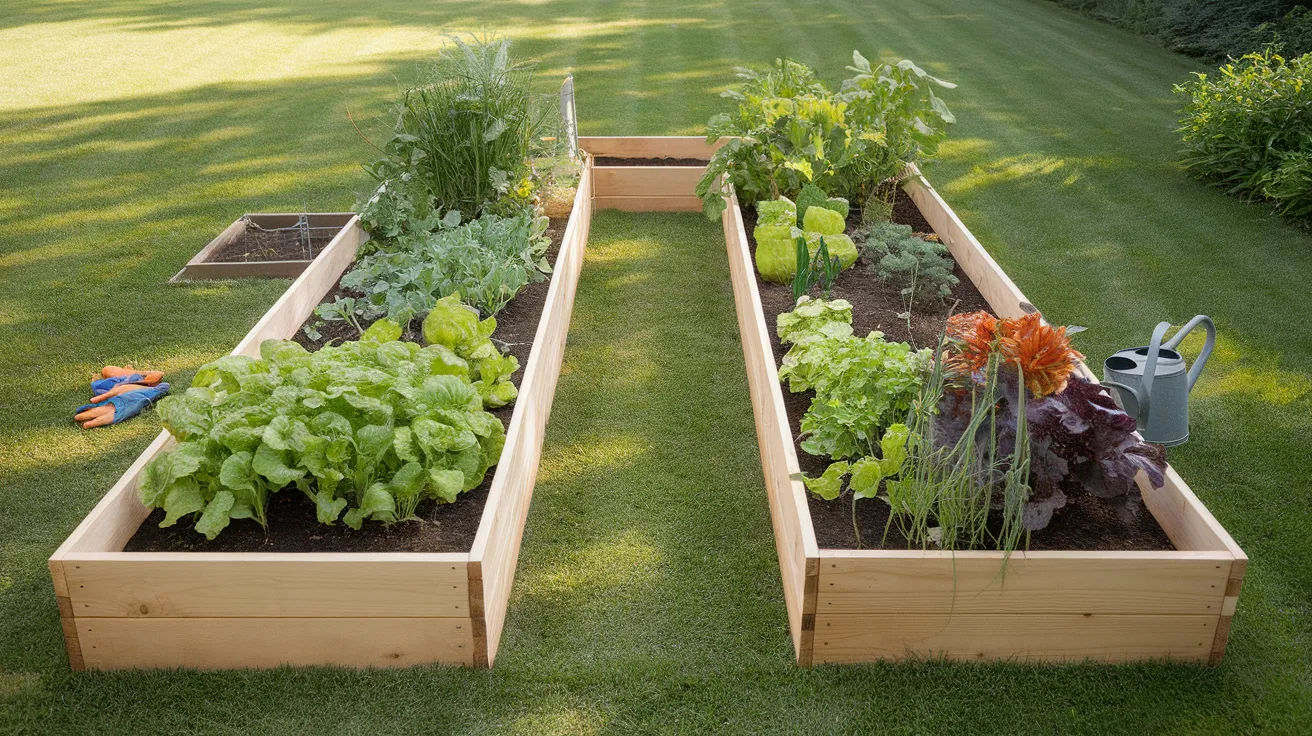
This design is shaped like a “U,” so you can reach all your plants without stepping on the soil.
It’s great for larger backyards or if you want to grow many things at once. You can build it with wood, blocks, or metal.
The open center lets you walk in and reach every part easily, making watering, weeding, and picking much simpler.
It also looks tidy and helps you keep your garden organized. U-shaped beds are perfect if you want more space for planting but still want everything within easy reach.
11. Rolling or Mobile Beds

Adding wheels to the bottom of a raised bed lets you move it around your yard or patio.
This is useful if your garden gets different sunlight during the day or if you’re renting and want to take your garden with you.
Use a wooden box with sturdy casters, and make sure it has drainage holes. Fill it with soil and grow herbs, lettuce, or flowers.
Rolling beds are also helpful if you want to bring plants indoors during cold weather. They offer flexibility and are easy to care for.
Why Choose Raised Garden Beds?
- Better Soil Control: You get to choose and mix the soil, which means healthier plants and fewer problems with poor ground conditions.
- Improved Drainage: Water flows through the soil more easily, helping roots stay healthy and reducing the chance of overwatering.
- Fewer Weeds: Because the soil is fresh and raised, it’s harder for weeds to take over your garden space.
- Easier on Your Back and Knees: The height of raised beds means less bending and kneeling, making gardening more comfortable.
- Great for Small Spaces: Perfect for patios, balconies, or tight backyards, raised beds let you grow more in less space.
Tips for Success
Keeping your raised bed healthy and productive is easier when you follow a few simple steps. These tips will help your garden grow well from the start and stay easy to care for all season long.
- Pick a Sunny Spot: Most vegetables and herbs need at least 6 hours of sunlight a day. Choose a spot that gets plenty of direct sun.
- Use Quality Soil: Fill your bed with a mix of topsoil, compost, and organic matter. Good soil makes a big difference in how your plants grow.
- Line the Bottom: Use landscape fabric or cardboard at the base to block weeds and keep soil in place, especially if your bed is on grass.
- Water Often and Evenly: Raised beds dry out faster than ground soil. Check your plants regularly and water when the soil feels dry a few inches down.
- Start Small: If you’re new to gardening, begin with one or two beds. It’s easier to manage and still gives great results.
- Plan Your Plants: Group plants by how much sun and water they need. This helps everything grow better and keeps care simple.
Conclusion
Starting a raised garden bed might seem like a big task, but it’s really just about taking that first step.
I hope these ideas gave you the push you needed to begin. If you’re working with a large yard or a small patio, there’s a raised bed style that can fit your space and your needs.
You don’t need to be a pro or spend a lot of money- just some basic tools, the right materials, and a little effort.
Gardening this way can be relaxing, rewarding, and even fun. You’ll enjoy better soil, easier access, and the chance to grow your own fresh food or flowers.
I’ve found that once you build one raised bed, it’s hard not to build more. So go ahead- try one of these ideas and see what works best for you.
You might be surprised by how much you enjoy it and how much you can grow.

